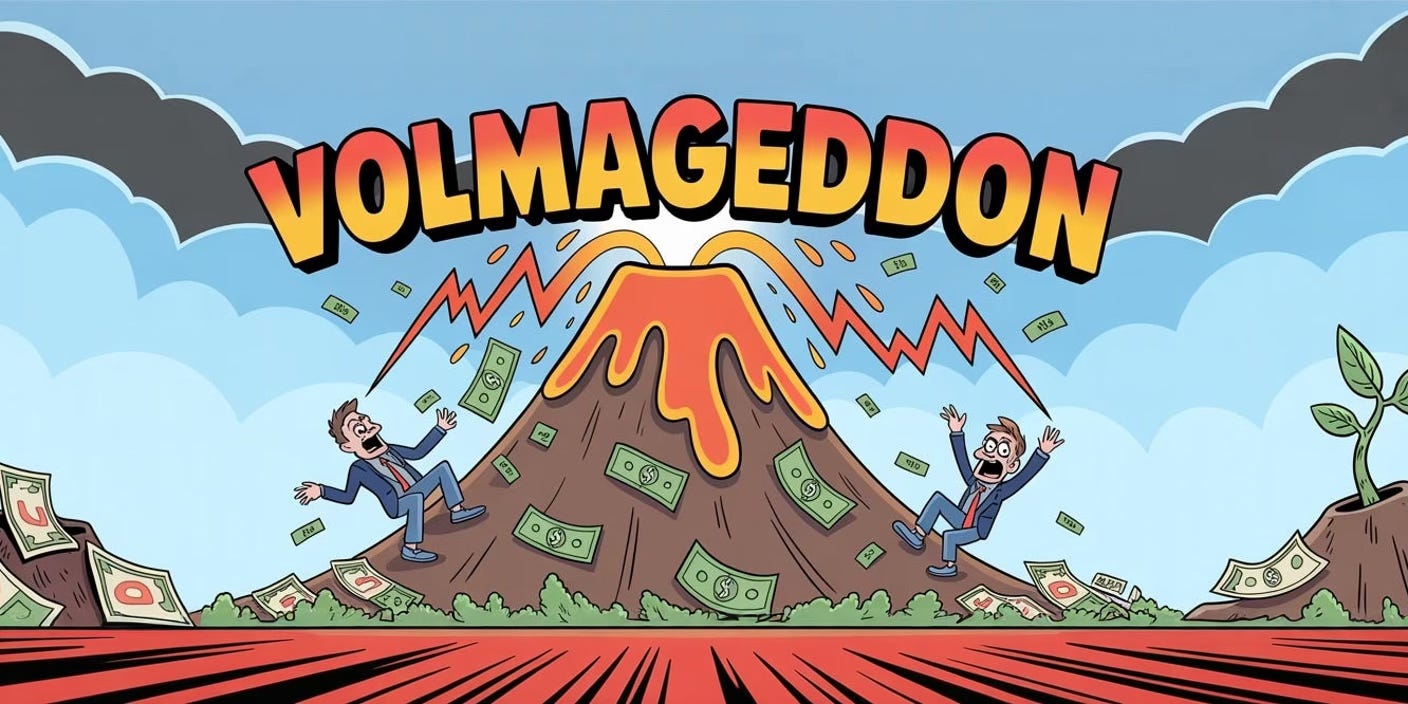Volmageddon: Why Wall Street Will Never Short Volatility the Same Way Again
The Day Volatility Broke the Market
On February 5, 2018, financial markets witnessed an unprecedented event that would forever change how investors view volatility trading. In a matter of hours, billions of dollars evaporated, popular investment products imploded, and the entire financial world learned a painful lesson about the dangers of betting against market fear.
The Perfect Storm
The crisis erupted when the VIX—Wall Street's "fear gauge"—exploded from a sleepy level of 17 to over 37 in just one trading session. This represented the largest single-day spike in the index's history. Remarkably, this chaos was triggered by what seemed like a routine market pullback—the S&P 500 had fallen merely 4%.
But this wasn't about the stock market decline itself. The real story was playing out in the shadows of the volatility complex, where investors had amassed enormous bets that market calm would continue indefinitely.
The Ticking Time Bomb
For years leading up to February 2018, shorting volatility had become Wall Street's favorite trade—deceptively profitable until it suddenly wasn't. The poster child of this strategy was the VelocityShares Daily Inverse VIX Short-Term ETN, known by its ominous ticker symbol: XIV.
These exchange-traded products had attracted billions from investors chasing what appeared to be free money. After all, volatility had remained historically low for years, and betting against spikes had been consistently profitable. It was the financial equivalent of picking up pennies in front of a steamroller—until the steamroller accelerated.
The Death Spiral Unfolds
The destruction followed a devastating sequence:
Initial Trigger: As markets fell and volatility rose, inverse volatility products like XIV faced mounting losses.
Rebalancing Requirements: These products were contractually obligated to rebalance daily, forcing them to buy VIX futures at day's end to maintain their inverse exposure.
Feedback Loop From Hell: This mandatory buying pushed volatility even higher, creating more losses, requiring more buying—a vicious cycle that fed on itself.
The Final Blow: XIV lost more than 80% of its value in after-hours trading on a single day. Within 24 hours, the product that had returned over 180% the previous year was effectively worthless. Credit Suisse, XIV's issuer, announced its termination shortly after.
Collateral Damage: Investors lost an estimated $2 billion overnight. Some retail traders saw their entire portfolios wiped out. The contagion spread beyond volatility products, briefly threatening broader market stability.
Why History Won't Repeat (Exactly)
The financial industry rarely makes the same mistake twice in identical fashion. Several safeguards now exist:
The Dangerous Products Are Gone: XIV and similar instruments were terminated. Surviving volatility products operate with stricter controls and smaller scale.
Regulators Woke Up: The SEC and other watchdogs now scrutinize complex volatility products far more carefully, demanding better risk disclosures and implementing position limits.
Institutional Memory: Fund managers, traders, and risk officers who lived through Volmageddon maintain healthy respect for volatility's tail risks. The easy money mentality around shorting volatility has largely disappeared.
Market Structure Evolution: Trading firms and market makers rebuilt their models to account for these feedback loops, reducing the probability of similar cascades.
Reduced Concentration: The total assets in inverse and leveraged volatility products remain a fraction of pre-crisis levels, limiting systemic risk potential.
The Next Crisis Will Be Different
While Volmageddon's specific recipe for disaster has been addressed, markets have an uncanny ability to create new vulnerabilities. The next volatility crisis might emerge from:
Novel financial products we haven't yet imagined
Unexpected correlations between seemingly unrelated markets
Algorithmic trading creating new types of feedback loops
Geopolitical events triggering unprecedented market responses
Hidden leverage in unfamiliar corners of the financial system
The lesson isn't that we've conquered volatility risk—it's that complacency remains the greatest danger. Markets have short memories, and somewhere, new investors are likely building the next "can't lose" trade that will inevitably implode when conditions change.
Volmageddon stands as a permanent reminder: in finance, strategies that work until they don't can destroy fortunes in minutes. The market's capacity for violence should never be underestimated, especially during periods of unusual calm.



